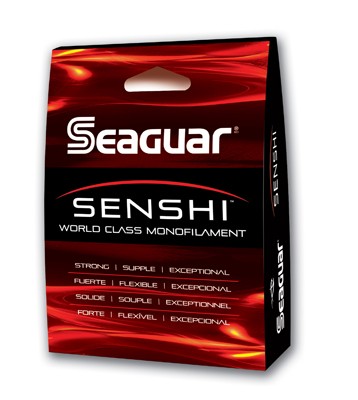It’s been a while since we talked about line. I’d like to take this opportunity to update you on what’s available for flipping and pitching. Those of you who have followed my career know that I didn’t have a line sponsor for a long time. That’s because I really didn’t feel comfortable with using just one manufacturer’s products. That’s changed.
I now fish exclusively with Seaguar lines. As I talk about choices I’ll give you the line characteristics for each type of line that I believe matter. From there you can make your own choice.
Let’s get started:
Monofilament
Monofilament has largely been surpassed in the flipping and pitching markets. There’s just too much stretch in it. Besides, other types of lines will give you better feel and better abrasion resistance.
That doesn’t mean it shouldn’t be a part of your fishing line inventory, however. It’s great for topwater because it doesn’t sink. It’s also popular with some anglers for crankbait fishing, worm fishing and even some jig applications (the stretch can be forgiving on the hookset and during the fight).
When you’re choosing a monofilament line, you should look for little, if any, memory. That helps avoid backlashes and coils of loose line between you and your lure.

Be careful of too much stretch, as well. A little is great, but a lot is bad. Make sure your monofilament is user friendly. In my opinion the best mono available is Senshi.
One thing I do want to say, however, is that while there are better choices available you’ll never hear me say you can’t flip or pitch with mono. I did it for years, caught a lot of fish and cashed several checks. Don’t despair if that’s all you have.
Braid
You want a braid that’s woven tightly and holds a round shape over time. That makes for less casting resistance in the guides, fewer backlashes, better knot strength and less cutting into the line of the reel spool.
Braid is at its best when you’re flipping and pitching heavy mats, or when you’re fishing heavy cover like wood or rock. I don’t care how careful you are or how many times you retie, that type of cover will damage your line. Braid will hold up better than anything else I’ve ever used. The best braid I’ve ever used is Kanzen.
Don’t worry about the fish seeing your line when you’re using braid. If you’re fishing where you should be, all your fish will come on reaction bites.
Fluorocarbon
Over the years, fluorocarbon has improved. The early stuff was stiff, wiry, hard to handle and plagued by inconsistent performance characteristics. The better quality fluorocarbons are now characterized by strength, abrasion resistance, a lack of stretch, good knot strength and consistent performance. It’s a great all-around choice for flipping and pitching.
I’ve fished with Seaguar’s Invizx for several years, long before I was sponsored by Seaguar. It’s a product I had so much confidence in that I really didn’t look for anything else. But then I was introduced to Tatsu, their higher-end fluorocarbon. I have to say it’s even better.
Either Invizx or Tatsu will do the job. Tatsu is expensive. I’ll not deny that. But most of us who earn our living fishing believe it’s well-worth it. If it’s outside your budget, Invizx will do you a fine job. It’s not a second-class choice.
Think about these things the next time you purchase line. They matter. Line is the only thing between your lure and the boat.





